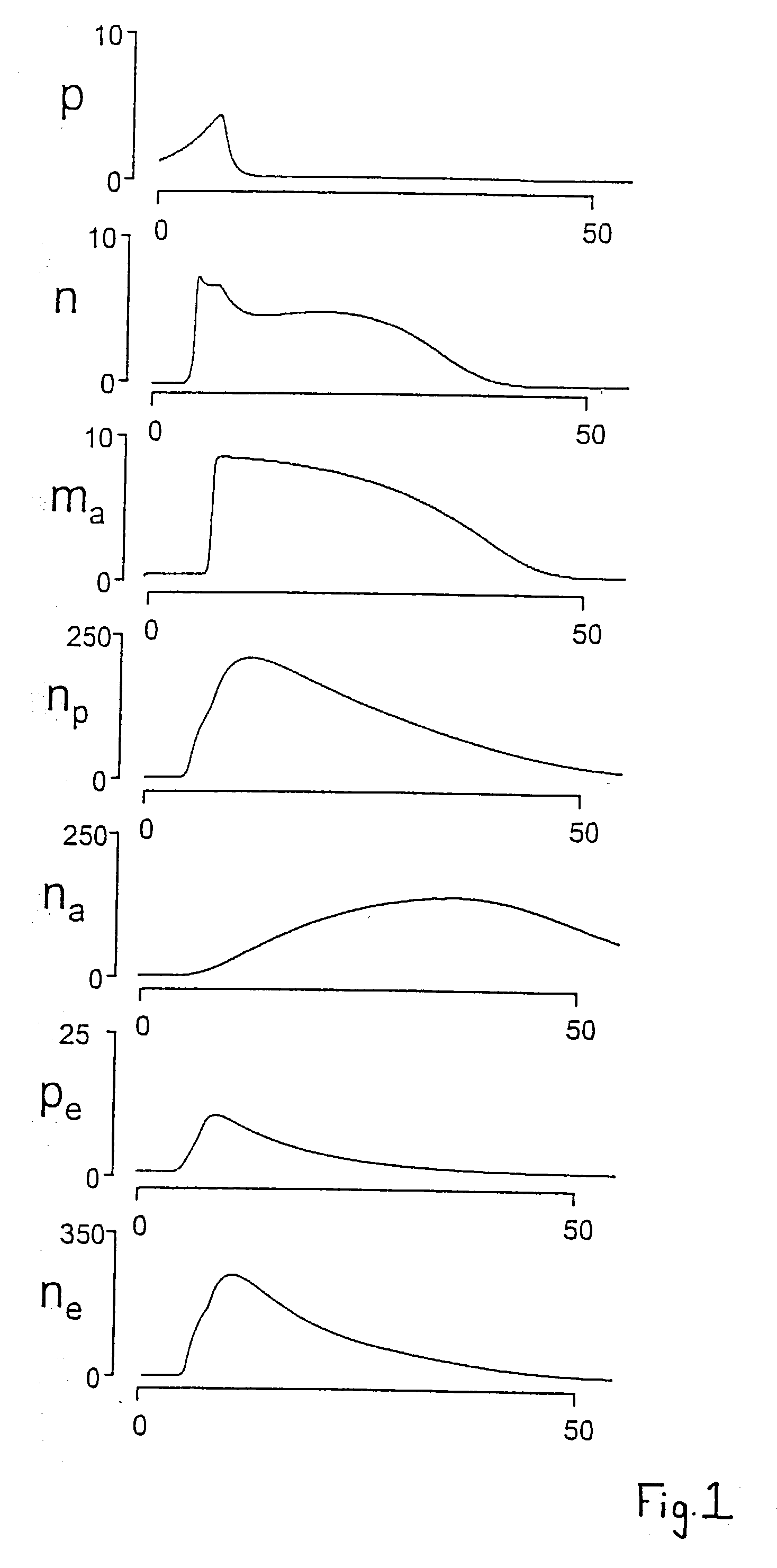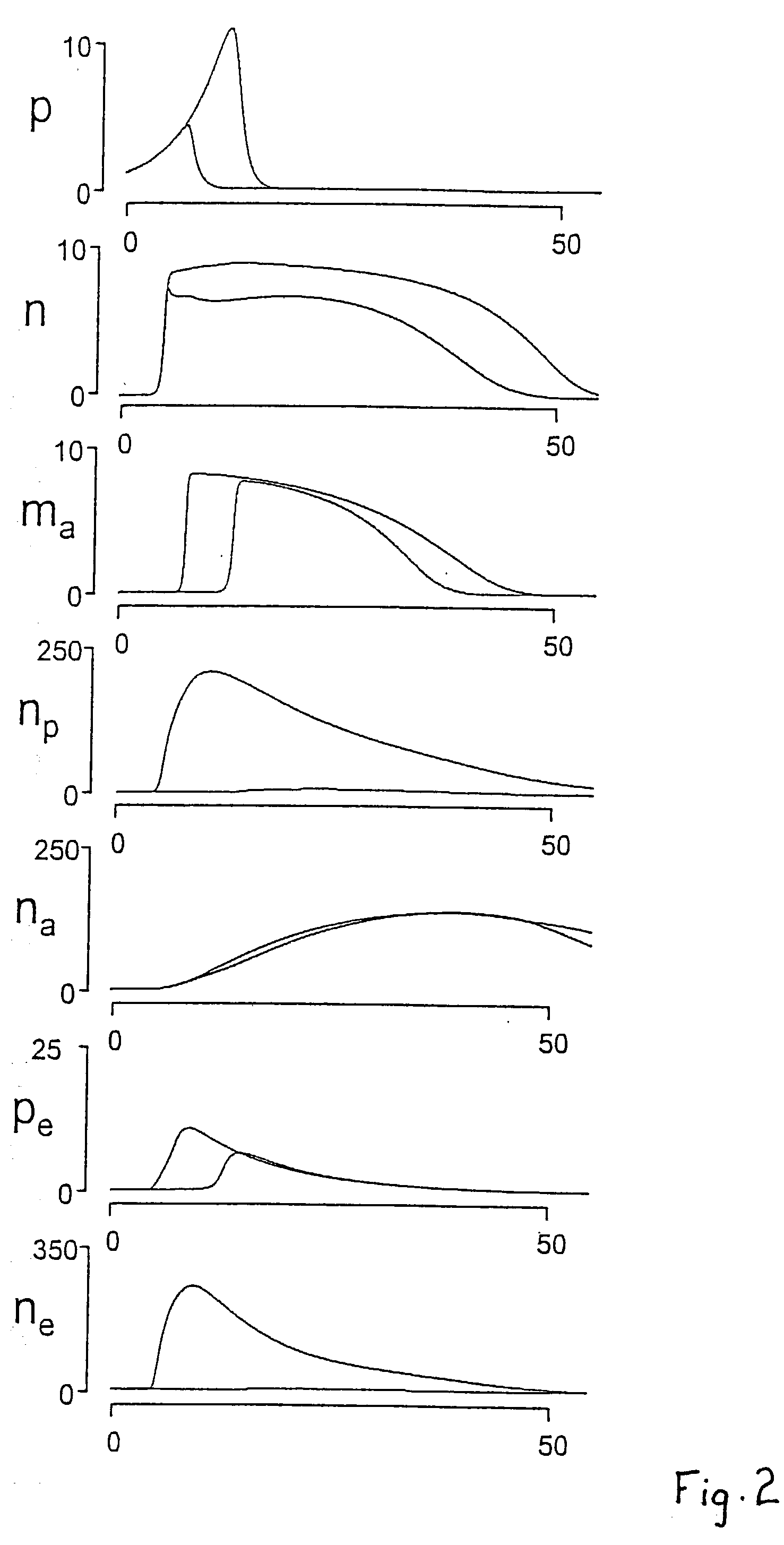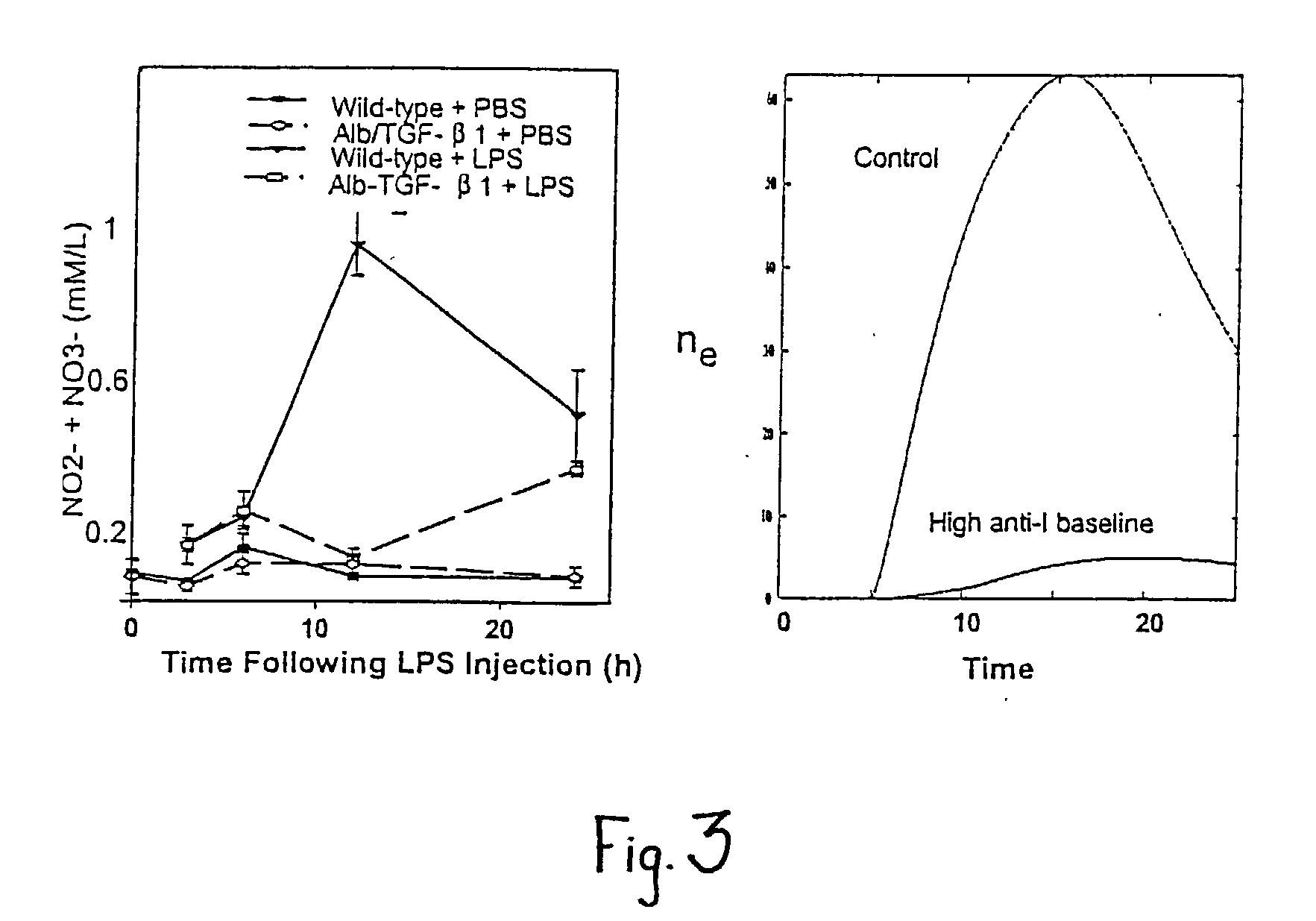Algorithm for estimating the outcome of inflammation following injury or infection
a technology of outcome estimation and injury, applied in the field of differential equations and dynamic systems, can solve the problems of affecting the homeostatic balance, affecting the macroscopically functioning organ system, and unclear persistent inflammatory response,
- Summary
- Abstract
- Description
- Claims
- Application Information
AI Technical Summary
Problems solved by technology
Method used
Image
Examples
Embodiment Construction
Initiator p Intact pathogen, can multiply Bacteria p.sub.c Inert pathogenic component that Complement can attract and activate effector cells p.sub.e Inert pathogenic component that Endotoxin activates effector cells and be transported to distant sites Effector m.sub.a First effector cell to be Macrophage activated, acts as general activator, produces some soluble effectors n Second effector cell, produces Neutrophils soluble effectors that destroys p n.sub.e Soluble effector produced by n Reactive oxygen and m, kills intact pathogens and nitrogen species degradative enzymes n.sub.p Soluble "pro-inflammatory" TNF-.alpha., IL6 effector n.sub.a Soluble "anti-inflammatory" IL10, TGF-.beta..sub.1 effector n.sub.ar Anti-inflammatory delay variable, as these are generally expressed later than pro-inflammatory effectors Target B A physiologic observable, such as Blood pressure blood pressure, that correlates with global outcome Intervention A An extrinsic modulator of the Antibiotic respon...
PUM
| Property | Measurement | Unit |
|---|---|---|
| adhesiveness | aaaaa | aaaaa |
| time | aaaaa | aaaaa |
| concentration | aaaaa | aaaaa |
Abstract
Description
Claims
Application Information
 Login to View More
Login to View More - R&D
- Intellectual Property
- Life Sciences
- Materials
- Tech Scout
- Unparalleled Data Quality
- Higher Quality Content
- 60% Fewer Hallucinations
Browse by: Latest US Patents, China's latest patents, Technical Efficacy Thesaurus, Application Domain, Technology Topic, Popular Technical Reports.
© 2025 PatSnap. All rights reserved.Legal|Privacy policy|Modern Slavery Act Transparency Statement|Sitemap|About US| Contact US: help@patsnap.com



